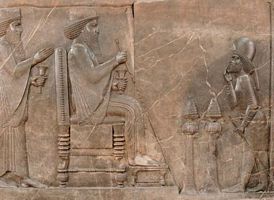
Welcome to our online collection of ancient coins and rings, ancient bronze and iron arrowheads, buckles, fibulas, bracelets, weights and other small ancient artifacts as well as to our collection of modern coins, world banknotes and stamps.
We hope that you'll find this site interesting as well as informative. You'll notice that most of the items shown in here were shot from three different angles, the face(Obverse)the side and the back(Reverse). And the intention behind this is to make all of the sections of a item/items visible even though it's not physically present in front of you. This way one will be more in touch with the artifact as if it's right in front of him. And also this will be of additional help for buyers by giving them more insight in determining whether a artifact is a genuine one from the ancient world or a modern forgery.
Where nowadays are found everywhere on the market and people are being conned all the time into buying fakes for a lot of money thinking they are genuine and never knowing that what they bought really worth just a few pennies. Please visit the Fake Coins page prior to any purchases you do from anywhere, particularly from the internet.
Ancient Coins vs Modern Coins
There are three types of coins or coins fall in three different categories , ancient, medieval and modern. Coins that are from around the 7th century BC up to the fall of the Roman empire which was in 476 AD are called ancient. Then there are coins from 476 AD up to around 1600 AD and these are called medieval. And the rest from 1600 AD up to our present day are called modern coins.
Now let's see what makes a ancient coin ancient and modern coin modern. The first thing that hits you when you see a ancient coin(beside the thought"Is that a coin or just a piece of rusted metal?")even if you've never seen one before is it's form which is not perfectly circular,it's circumference does not make a perfect circle. Where as modern coins do. They are perfectly circular in form.This is actually the basic difference between a ancient coin and a modern one. Secondly comes the thickness ancient coins do not have a uniform thickness.If you hold one and examine it's side closely you'll notice thickness here thinness there it doesn't have the same thickness everywhere and you'll also notice that it's rough to the touch. Please note that some medieval coins categories like for instance byzantine or Islamic coins also have the same characteristics as that of ancient coins. And these medieval coins are regarded by many as ancient coins because they look like ancient coins as far as the shape and form is concerned. So it's not easy to tell the difference sometimes specially for someone who is new to the hobby of coin collecting, mistakes will be made sometimes in telling which is which.
As far as modern coins shape and form is concerned, they are perfectly uniform in thickness and their sides are smooth.No matter how you turn a modern coin on its side it has always the same thickness and smoothness.These deformations in ancient coins comes from the fact that they were hand made hand struck each and everyone of them.From metal melting to die engraving to coin stricking everything was done by highly artistic people and by hand.
That's why every ancient coin have a unique different look to it even from the one beside it that just has been struck.The differences are basically caused by the shape of the piece of metal''the flan''or the body of the future coin and the different forces with different angles exerted upon the flan through the strike of the hammer on the die .This is bit like striking a nail with a hammer.Each force applied in striking it is different every time.The die actually resembles a big nail(please check the images below on the History Of Money page to get a better idea of what a die look like)that one holds in the hand.The tip of that nail is flat and in that area is carved inward the image that will later appear on coins.That die is for one side of the future coin the image on the other side is carved into the anvil.This is where the flan(usually heated first to permit a better image transfer)is usually layed first on that anvil that is carved with a image for the other side of the coil then the die is held momentarily above it before being struck with a hammer.Each strike is a bit different in force/position/angle creating the differences in coins struck by the same die,without forgetting the weight which is also a bit different.The image transferred through the strike to the coins is the same but not its position and that also influence the thickness of the future coin.So you end up with something that has a unique weight a unique image angle/position and thickness.A ancient coin !
As for modern coins the controlled force position and angle can only be accomplished and repeated over and over again with modern coin striking/pressing machines. Every procedures that goes into creating a coin is controlled and can be repeated to make other copies of the same coin.
Other characteristics of ancient coins is that they have writings on them that are usually in Greek Latin or Arabic. These are the three most common languages that you'll come across on ancient coins. And no writings in English french Spanish Italian Portuguese etc commonly spoken languages or dates should ever be found on ancient coins because these characteristics can only be seen on modern coins or tourists fakes of ancient coins.
The pictures below will help you see better the differences between ancient and modern coins.Please note that they do not cover all the forms and sizes of coins they are simple guidance for beginners interested in collecting coins particularly ancient coins.
Ancient Coins ----- | ----- Modern Coins
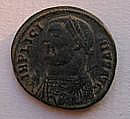 |
 |
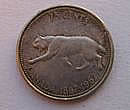 |
 |
 |
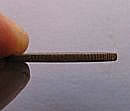 |
 |
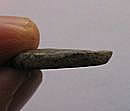 |
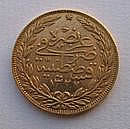 |
 |
Notice above the irregularities in forms sizes and shapes of ancient coins.Although on one side they reflect roughness on the other they depict incredible artistry and workmanship of the celators or die engravers .Take a look at the first ancient coin on top on the left of emperor Licinius II .The details of the face hair and outfit are just unbelievable.And this is nothing there are coins the size of a lentil with as much details as this coin above.Makes you wounder how these people were able to create such tiny breath taking pieces of art and yet they didn't have magnifying glasses ?